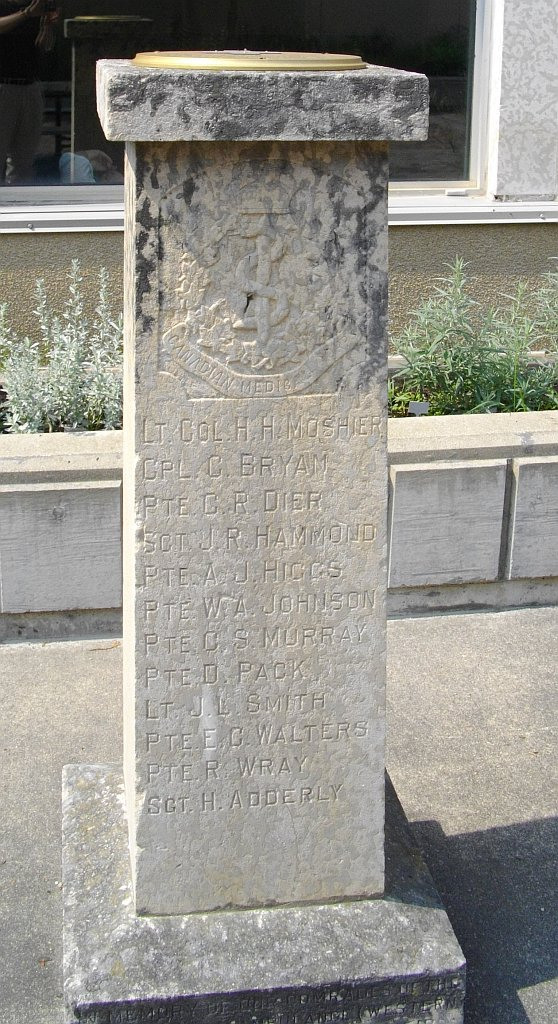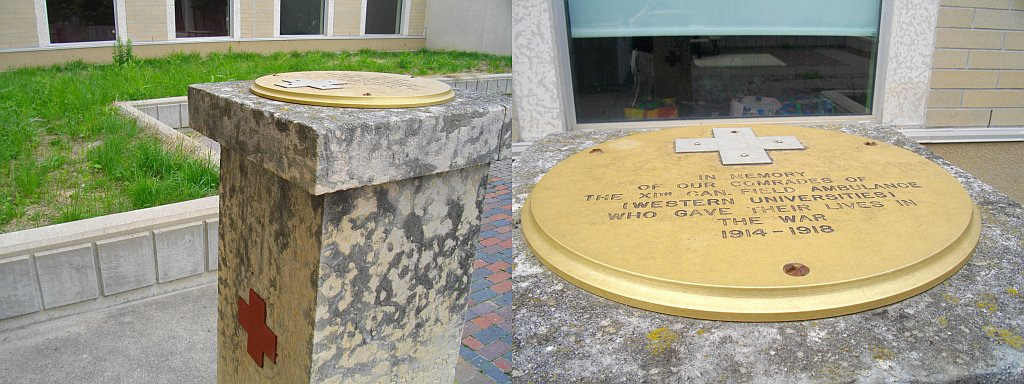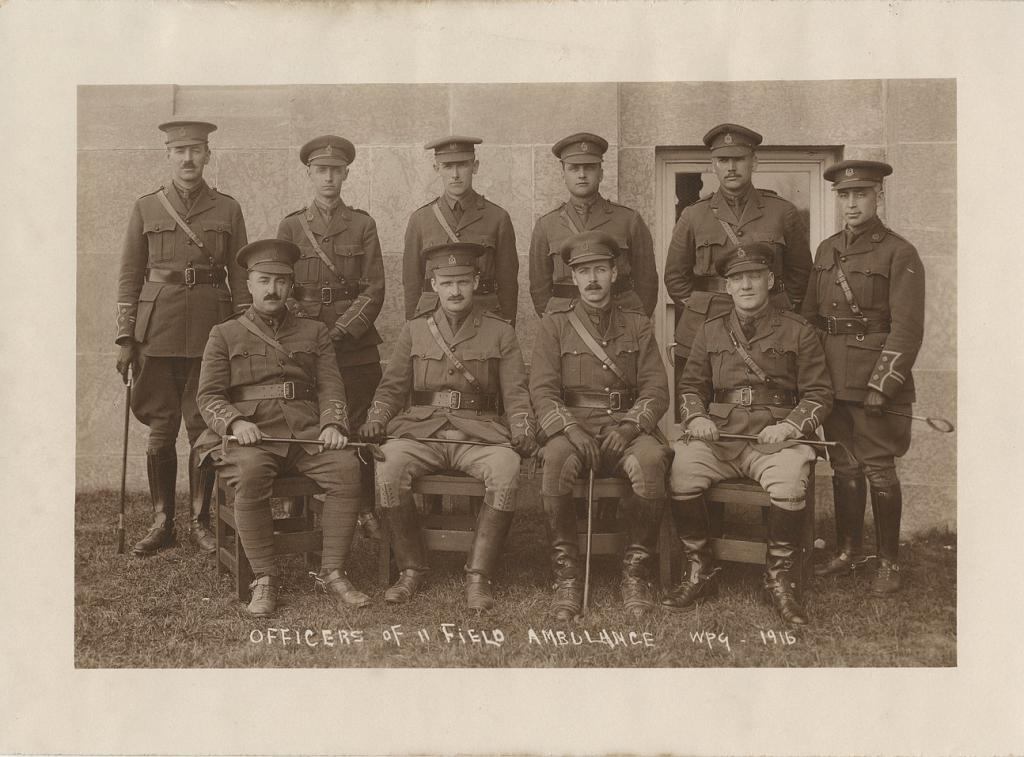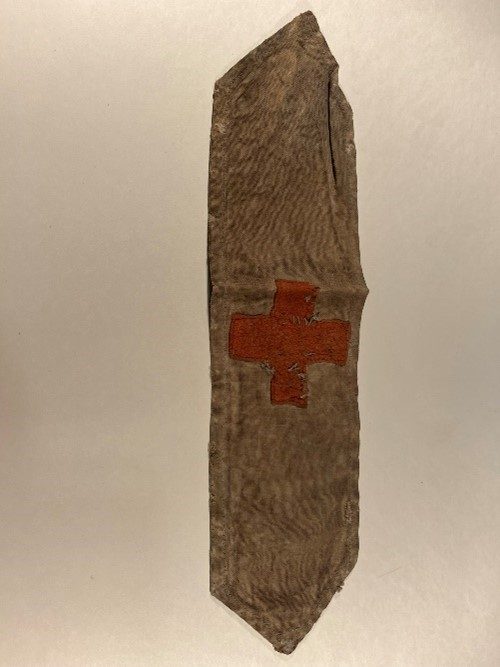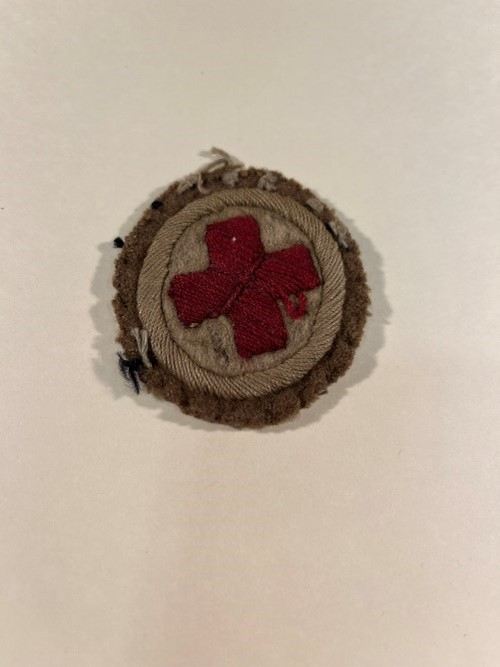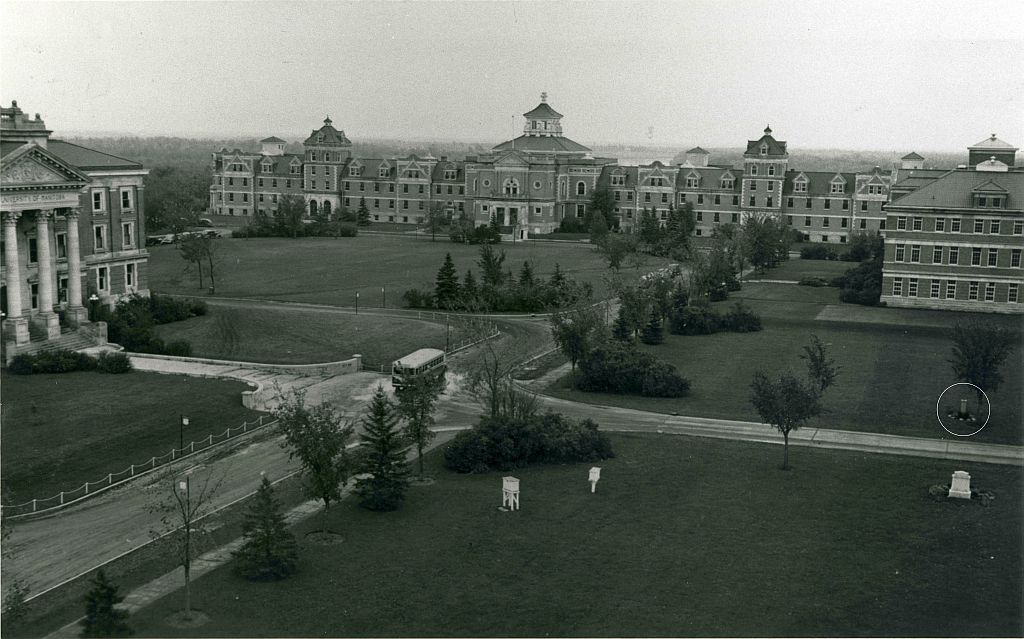
Remembering the forgotten
New perspective on hidden UM WWI war memorial
Hidden in a corner between University Centre and the Helen Glass Centre for Nursing, on the University of Manitoba’s Fort Garry campus, is a memorial that largely goes unnoticed. It is dedicated to the 30 members of the 11th Canadian Field Ambulance who lost their lives in World War I. The memorial was unveiled almost a hundred years ago, in October 1927, by surviving members of the Field Ambulance unit.
The names on the sides of the memorial are weathered and faded now, as are the memories of the men behind them, and even awareness of the monument itself. The Manitoban published articles about it in 1949, 1951 and 1963, and it was featured in a 1994 UM Alumni Journal article about WWI memorials on campus. But little has been written since then to remind the UM community of what it represents.
Before University Centre was built in 1970, the monument had a more prominent location across from the Administration Building. Although it has not moved far from its earlier location, the area has built up around it and it is now in an isolated spot that sees very little traffic.
The 11th Field Ambulance supported the 4th Canadian Division and was at many of the major battles in the First World War. Its role was to evacuate the wounded to medical stations away from the front lines. It was dangerous work, and many were killed in action as they tried to aid the wounded.
Diary of the Eleventh, held in the Elizabeth Dafoe Library, details the unit’s mobilization and active service in France and Belgium. It was written during and after the war by members of the unit at the suggestion of their commanding officer, Lt.-Col. Heber Moshier, who was killed in action in 1918. It was donated to the library in 1955 by Christopher T. Best, who had designed the memorial and was a member of the 11th.
Photos of the officers of the 11th Field Ambulance are held in the Faculty of Medicine Archives and Archives & Special Collections holds issues of the unit’s trench newspaper, called M & D (Medicine & Duty), which was published by the soldiers during the war . The Archives also has two artifacts from the 11th that were donated by Dr. Thomas A. Pincock on behalf of Dr. James M. Brown, who became a professor of agriculture at UM. Both had been members of the unit. The first artifact is a circular Red Cross badge that would have been worn by the soldiers on their sleeves. The second item is a strip of cloth with pointed ends and a Red Cross in the centre. A note with the item refers to it as an ‘epaulette,’ however, several WWI experts that were consulted suggest that it may be an armband.
In honour of Remembrance Day, and to rekindle the memory of the fallen, visit the digital presentation about the memorial and the lives of the men it commemorates. They were, and are, more than just faded names carved in stone. They had friends and families and hopes and dreams for the future – a future that was cut short for them.
Lest we forget.
Wayne Chan [BSc/93, BA/00] is a research computer analyst for the Centre for Earth Observation Science. He is an avid researcher who loves history and contributes stories discovered from his research.








